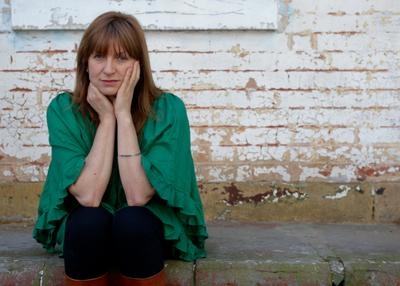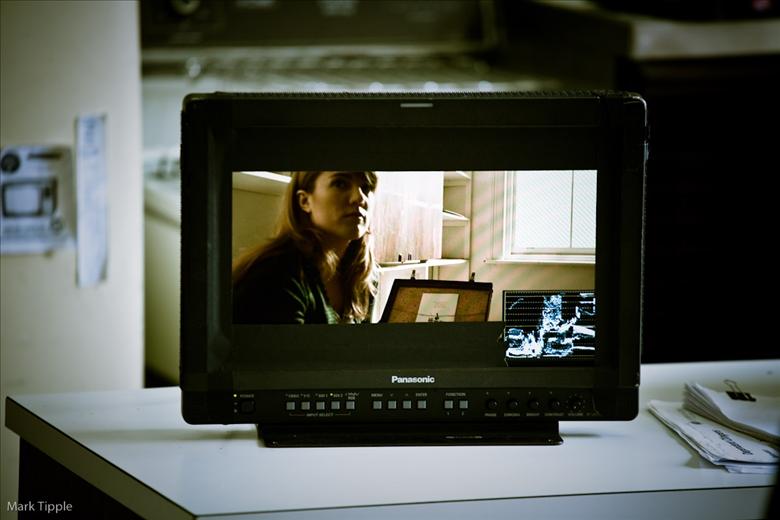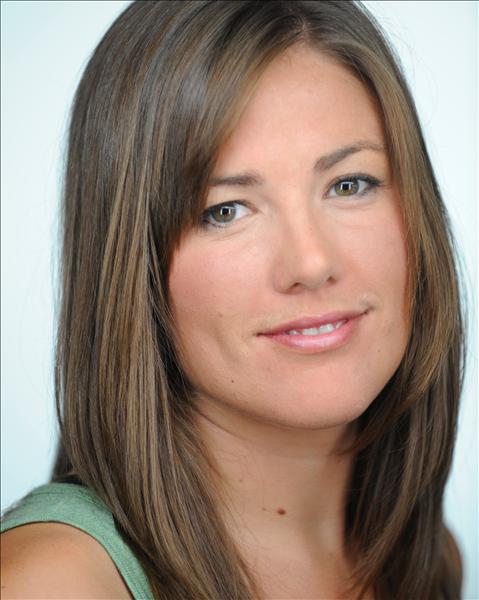PETER GALVIN: SINGING THE BLUES
 Monday, May 7, 2012 at 8:35AM
Monday, May 7, 2012 at 8:35AM Anyone who has heard the man's boisterous laugh will themselves giggle to hear Peter Galvin described as the industry's 'quiet achiever'. But the eclectic 28 year film industry career he has carved out for himself has often been in the selfless service of others. As a film journalist, his byline has appeared in many publications, notably The Sydney Morning Herald, Inside Film and, currently, online at SBS Film; he is well into his second decade at the prestigious Sydney Film School, where he is Head of Screen Studies; and, spent three years programming the iconic Popcorn Taxi events. He kindly sat down with SCREEN-SPACE to discuss his latest short film, Kelly's Blues (he's made four), a few days after it's premiere at the iconic Randwick Ritz cinema in Sydney's eastern suburbs.

Peter, the film has a strong, vivid feel for the period in which it's set, the semi-rural world of 1970's Australia. Why did you choose that landscape and decade?
The story came out of my life. As someone famous once said, all fiction is a form of disguised biography. But Kelly’s Blues is fiction. There’s no one to one relationship between me and the characters and events, the time and the setting. To take two examples, I did not grow up in the country and I wasn’t an only child. Another is that I have no sense memory of 1974 at all. But I would say that Kelly’s Blues is very much an emotional biography.
I liked the kind of filmmaking possibilities it presented. I liked the challenge of doing a version of the 70s on a low budget. But it wouldn’t be kitsch, nostalgic, and we couldn’t afford spectacle for its own sake. And it’s cheaper in the bush – one doesn’t need to ‘dress’ a paddock for 70s period!
But the setting will inevitably evoke melancholy and I think a receptive audience will respond by remembering unique, personal connections of their childhood.
I wanted to convey the feeling that what you are watching is a memory – that the story is of an older man (a man much older than me by the way!) looking back to a formative moment in his life. There’s only a faint suggestion in the final cut, but I think it’s there.
So selection of time and place for the story is very personal in two ways; one was that I was I trying to work out certain feelings about my childhood – the need for a special friend as a refuge from a family life that was not especially emotionally nurturing (true or untrue that was how I felt). It had to be 1974 because Ray’s aggressive, abusive style of parenting would be addressed in a very different way in a 2012 setting. Indeed, in some ways it would be the plot. So it’s no accident the movie is set in an era that’s pre-feminist, pre-therapy. It’s part of what it’s about.
And it’s a child’s point of view; all events in a way are being filtered through Marty’s consciousness, which is full of fear, curiosity and a sort of severe sense of good and bad/right and wrong. It’s an ironic approach. Marty reads his parents fears and regrets as a lack of understanding and a rejection. I think it makes the audience feel a little gutted; they think ‘Gee, I wish they could just break through and help each other’.
The setting also invokes memories of the famous Renaissance period for Australian cinema; it could very easily have come from that time. Which Australian filmmakers have influenced you in general and Kelly's Blues in particular?
 I didn’t make it under the sign of Oz 70s cinema. It’s an era I happen to know well. For 12 years I’ve been teaching a course on it! But I like The Devil’s Playground. I like the Last Wave and The Plumber. The Mad Max Movies. More recently I like very much The Proposition, Noise, Mullet and Animal Kingdom. None of these pics were anything to do with Kelly’s Blues.
I didn’t make it under the sign of Oz 70s cinema. It’s an era I happen to know well. For 12 years I’ve been teaching a course on it! But I like The Devil’s Playground. I like the Last Wave and The Plumber. The Mad Max Movies. More recently I like very much The Proposition, Noise, Mullet and Animal Kingdom. None of these pics were anything to do with Kelly’s Blues.
(Pictured: Galvin, far right, with cinematographer Donald McAlpine and director Cathy Henkel, at The Australian Director's Guild Awards, 2011)
I talked a lot, during pre-production, about taking the curse off the scripts apparent ‘Aussie Drama 101’ feel. Still, I think I know what you’re talking about. On the surface, in synopsis, and even the script, Kelly’s Blues seemed to fulfill some casual expectation of ‘Aussie-ness’ and a certain kind of low-key, naturalistic, elegiac mood we often associate with Australian cinema of the late 70s and early 80s era. Though that’s a critical cliché that’s worth arguing about.
Was there a stylistic reference point to which you adhered?
I went into it knowing the style would be very active, very aggressive. In preparing the film I watched a lot of Hitchcock and Michael Mann and some Scorsese. The idea was for me to absorb and develop visual storytelling strategy’s that would imply that what we see and hear is leaping from the psyche of Marty. I imagined a somewhat surreal, very tense, un-easy mood. The final cut is not a thriller.
I can see those influences in the film’s craft and your filming and framing choices, though the story is far gentler, more humane, than those great directors are known for.
Originally the script had more mystery and it was disciplined in a very severe way like a suspense picture; very planned, very precise. It was conceived as very subjective; the camera would be Marty in a way and I never wanted it to stop moving! Unfortunately we ran out of money and we couldn’t afford a Grip. Some of these basic ideas remained. I ended up using almost imperceptible digital zooms; very slow tilts and pans. I called the style ‘revenge of the tilt’. It was a way to get energy into the shot.
From the first pre-production meeting to its recent premiere (at Eastern Sydney's Randwick Ritz theatre), how long did you spend on the film?
About seven years. I had the basic plot outline by mid 2005. But the roots of the piece go way back to my University days. Then I wrote a very similar story. It was about a little boy, about 6 years old who forms a friend ship with the old man next door. The old man turns out to be a war criminal. But its premise was near identical to Kelly’s Blues; a child and his special friend; his attachment to a character that is on the surface toxic. The irony is that this unlikely friendship is a form of liberation for both characters.
Describe the down-times experienced by a short-film maker, such as when finances dictate that production slows or the commitment or intensity wanes?
The intensity never waned for me. There’s no down time. Post-production slowed on Kelly’s Blues because it took a long time to find the right editor and there was no money. Ultimately we found Anthea Hewett who was perfect. I think you might be talking about the major thing that pursues any so-called ‘no-budget’ filmmaker – the need to lead and encourage enthusiasm from colleagues, crew and third parties.
Exactly.
That’s not a trial. It’s just a question of managing people’s expectations and understanding their needs. One can tell from the start when one is meeting crew or a service provider and laying down the production scenario we use; that there’s no money or little money – whether they’re going to stay the course. When people ask me, once they learn there’s no money, “what’s in it for me?” I do not have an answer. That’s such a personal thing. They’re talking about their lives…what they’ve done, what their aspirations are…only they can see whether participating in the production of the film will make a meaningful contribution to their personal and career development. But I don’t find these issues troublesome and difficult. I’m a very practical filmmaker.
Where did you source the obviously accomplished crew and technicians that have resulted in such a quality visual work?
 Right now its practical to make movies with my pals, many of them graduates of Sydney Film School where I’m Head of Screen Studies and have taught since 2004. Some of the crew were film students, or had only recently graduated. Some of the crew though were pros; like art director Hayley Stephens and production designer Paul Finch. So was the Gaffer. The cinematographer Ross Giardina, an AFTRS grad and SFS grad, was I suppose, then, right at the beginning of his professional career as head of the photography department. But he was very experienced, had worked in the pro environment.
Right now its practical to make movies with my pals, many of them graduates of Sydney Film School where I’m Head of Screen Studies and have taught since 2004. Some of the crew were film students, or had only recently graduated. Some of the crew though were pros; like art director Hayley Stephens and production designer Paul Finch. So was the Gaffer. The cinematographer Ross Giardina, an AFTRS grad and SFS grad, was I suppose, then, right at the beginning of his professional career as head of the photography department. But he was very experienced, had worked in the pro environment.
Most of the crew and post-production crew were friends and by the time we shot I was very close to the actors, too. It’s a nice way to work. What I’m saying is that in most cases everyone not only wanted to be there; they found they’re own personal way to contribute to the work. They were involved. And that involvement was not based on cash reward. I can’t tell you what it was that drove them, I can’t speak for them.
So the cliché of the low-budget film-maker suffering for his art didn’t manifest over the many years of Kelly’s Blues’ production?
It’s self-indulgent to talk about how ‘tough’ this is. No one asked me to make it. There’s no sponsor to answer to, no patron. I wanted to make a film and I will keep doing so in these terms until I feel the need to pursue a more conventional path. I cannot go on forever relying on my own finances! But it’s unseemly to complain or even to talk about ‘struggle’. Also friends contributed to the budget. I had invested, as had producer Ulysses Oliver and associate producer CC Williams, a lot of money and time and effort. It has been and remains a major pre-occupation; even though since shooting it I’ve made another film, Shanghai and am in pre-production on a new film, The Outskirts of Love. Shanghai will be ready in August. I hope to start shooting Outskirts in October this year.

I'm intrigued as to the nature of the on-set relationship you formed with your two leads, Alana Ferris and the boy Hugo Larsen (pictured, above). They are called upon to invest in some very intense scenes; what role does the director play when those shooting days finally arrive?
It’s interesting the way you phrase that question; I tried to avoid too much talk and too much ‘relationship negotiation’ on set. By the time we shot my role was actor management; having them prepared and ‘real’. In a way the ‘directing’ as I think you are imaging it, happened in pre-production, rehearsals, conversations long before the shoot. This was a directing method that grew out of an understanding of how the film would be shot; in only a few days. I knew there would be the desire to move quickly from shot to shot since the script was long and complicated. So in a way the on-set experience was simpler than you might think.
The degree of information about Kelly that Alana conveys in her screen time suggests a great deal of back story was afforded her character.
 I started working, loosely at first, then with great intensity as time wore on, with Alana (pictured, left) a full year before we shot. I wrote an entire biography, thousands of words, for Kelly. We both learned what we could about Borderline Personality Disorder - the malady that afflicts Kelly – with the help and assistance of Dr. Gary Galambos. Though it’s never named in the story BPD was crucial; one of our ambitions was to create a sympathetic portrait of a mentally/emotionally disturbed character; the sort of character who in movies, is often seen as a ‘problem’ or some sort of ‘savant’. Indeed the title is ironic – her ‘blues’, her BPD, enables Kelly to see Marty’s agonies with tremendous insight; and of course Marty has great empathy for Kelly. But Kelly has no understanding she’s made a difference to Marty’s life; and Marty being a child is not conscious of the role he played in enabling Kelly to get on with her life.
I started working, loosely at first, then with great intensity as time wore on, with Alana (pictured, left) a full year before we shot. I wrote an entire biography, thousands of words, for Kelly. We both learned what we could about Borderline Personality Disorder - the malady that afflicts Kelly – with the help and assistance of Dr. Gary Galambos. Though it’s never named in the story BPD was crucial; one of our ambitions was to create a sympathetic portrait of a mentally/emotionally disturbed character; the sort of character who in movies, is often seen as a ‘problem’ or some sort of ‘savant’. Indeed the title is ironic – her ‘blues’, her BPD, enables Kelly to see Marty’s agonies with tremendous insight; and of course Marty has great empathy for Kelly. But Kelly has no understanding she’s made a difference to Marty’s life; and Marty being a child is not conscious of the role he played in enabling Kelly to get on with her life.
Was Hugo’s understanding of Marty’s emotional state as profound? Is creating a deep character history pertinent when directing a child actor?
Hugo wasn’t an actor, though he did acting at school. I just mean he wasn’t a professional. His parents, old friends of mine for some twenty years actually volunteered to take on the burden of ‘explaining’ much of the more difficult material to Hugo. He’s a very grounded, sensible, bright kid and very happy. My role was to make him feel safe. I prepared him by simply spending time with him. The intensity came out of his eyes, his stillness. Viewers feel uncomfortable because they know and understand the potential danger Marty might be in. For Hugo it was simple; I lot of the time it was a matter standing, walking and moving very slowly. It had nothing to do with an intellectual or emotional grasp of what was going on in the story. One time I asked him what he thought of Marty. He said he was – and I quote – “an idiot”. That was a relief! That kind of distance on the character told me how to direct him. On set it was about really practical stuff; keeping him focused, interested. He hung around with the crew. He was shy of Alana, though he liked her, and I used that in the movie. Though he was great, he’s a kid and in the more intense scenes he wanted to laugh! I directed him on set a lot of the time by talking him through a take; like old silent film directors!
Finally, describe the relationship you have with your film at this point.
Well, I’m quite proud of it. I think it’s moving. It’s not the movie I imagined. But it’s a good version of what I wanted to do. I love the music by Patrick Nellestein and Andrew Plain’s sound design, and the special effects and colour grade work by Lee Launay and Ulysses. The performances are touching. But I see my mistakes. But I don’t want to talk about them because now we have to get the film out to the public and it’s unseemly to jump all over your own work. I learned a lot.

Reader Comments (2)
It's such a great looking film and very resonant. Peter knows how to make a film that resonates on all levels and you find it resinding in your thoughts for a long time to come.
Good work.
Most people get their big breaks in high school or college drama and theater classes, yet some start with one of the other careers in the film industry. And whether you realize it or not, there are plenty of options beside actor or actress when it comes to landing a job in the film industry.